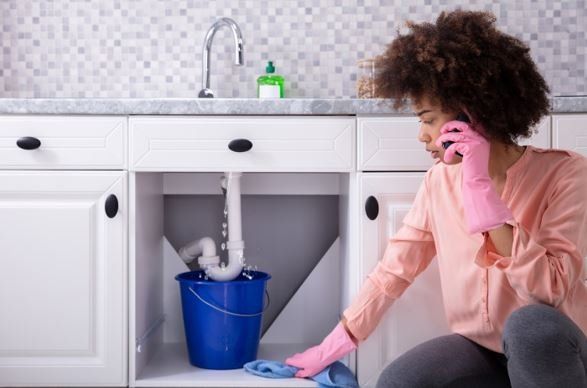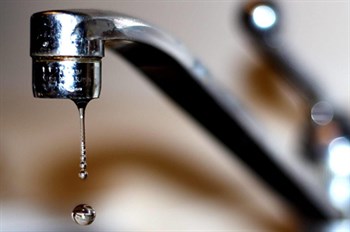Listed here below you might get more good resources about How to Detect and Fix a Bathroom Leak.

Washroom leaks are annoying as they interrupt your day's strategy. They differ in seriousness depending on the resource of the leakage. Yet, you need to prioritize them, as they can rapidly intensify. So, it is a relief that the majority of bathroom leaks are very easy to find and fix, with minimal cost implications.
Having a water leak in bathroom can be stressful to the home owner. The write-up offers as a "first help" when you need an emergency action to a water leakage in washroom.
Discovery and Repair Work of Water Leakage in Bathroom
Water leak in washroom commonly results from plumbing as well as pipe mistakes. There are numerous sorts of bathroom leaks. You may need a fundamental knowledge of these leak types to find the water leakage in washroom. Below are the usual washroom leakages and fix tips:
Sprinkle Leaks
These commonly arise from water splashing on the bathroom flooring from the bathtub. It is a consequence of using an inadequate shower curtain or used bathtub lining. It damages the bathroom flooring and might trigger rot to wood floors as well as washroom doors. The water normally swimming pools around the tub or shower. This might cause worse washroom damage without timely handling.
What to Do
This shower room leak is the simplest to take care of. You only need to replace the curtains or recaulk the bathtub or shower. If the leak has damaged the bathroom flooring or door, you might need to change these to prevent more damage. The good news is that you can involve a pipes expert to aid with the washroom repair.
Toilet Leaks
Often, water leakages from the bathroom and swimming pools around the bathroom base. It is an eyesore in the shower room and requires punctual focus.
What to Do
If there hang screws between the cistern and bathroom, you just need to tighten them. Often you may require to reapply wax on the gasket or call in a washroom leak professional to change broken or used components.
Clogged Restroom Sinks
Often, the water leakage in bathroom results from sink blockages. This is usually a nuisance to property owners and also may be unpleasant. Clogs may result from the buildup of soap scum, hair particles, or debris that block the drain. It is very easy to deal with blockages, and you may not require professional abilities.
What to Do
You can utilize a drain snake to get rid of the debris in the drain as well as let the stationary water circulation. Drain pipes cleansers are additionally offered in shops and also are easy to use.
Conclusion
Water leakages in the washroom are preventable occasions in the house. Maintenance as well as routine checks assist to keep whatever in good form. Yet, you can never be as well careful, and also these events still happen. When they do, fix them immediately, or engage the solutions of a specialist.
The article offers as a "first help" when you require an emergency feedback to a water leak in shower room.
Water leakage in shower room commonly results from plumbing and also pipe mistakes. You may need a fundamental understanding of these leakage kinds to detect the water leak in restroom. It damages the restroom floor and may cause rot to wooden floors and bathroom doors. Often, the water leak in washroom results from sink blockages.
Water Leaking in the Bathroom Wall
A GUIDE TO FINDING LEAKS IN BATHROOM WALLS
Paint or Wallpaper Peeling: This sign is easily spotted, so it cannot be missed. A leak in the wall can lead to wallpaper that separates along seams or paint that bubbles or flakes off the walls. Musty Smells: The damp flooring and plaster inside the wall grow an odor similar to wet cardboard as water slowly drips from a leaky pipe inside the wall. You can find leaks hidden beneath a musty odor. Growing Stains: The interior of a wall affected by a leaky pipe sometimes becomes infested with mold. Often, your indicator of a hidden plumbing problem is a growing strain on otherwise clean plaster. Structural Damage: Do not overlook constant moisture inside the walls of bathrooms when ceilings or floors become structurally compromised. Water-damaged walls can damage adjacent surfaces and stain flooring and ceilings. Unusual Discoloration: The wet spots may eventually dry when a leak penetrates deeper inside a wall. The stains they leave behind are paler than the adjacent paint or surface. Dripping Sound: It is common to hear dripping sounds inside walls when water runs down them. A squeaking noise can be heard while turning off a valve in a sink, bathtub, or shower. When flushing the toilet, you may also hear this noise. A GUIDE TO REPAIRING WATER LEAKAGE
Verify The Wall Leak: Shut down your main water supply and note the reading on your water meter. If the meter reading rises after a few hours, the leak is inside the house. In the absence of any changes, the leak may be the result of clogged gutters or drains. Turn off the water: You can turn off the water after you confirm the leak is within the walls. If you’re beginning repairs, drain as much water from the pipes as possible. Find & Fix The Leakage: Locate the wettest area on the wall with a moisture meter or infrared camera. Patch kits can stop the leak, but the fix might only be short-term. In the next few days, double-check the area to ensure the leak is no longer present. Removing mold and cleaning all surfaces: Dish soap and warm water should be used to clean affected areas. Bleach and water are recommended for disinfecting nonporous surfaces. Fan and dehumidifier running will speed up drying time. Remove mold growth immediately from walls, ceilings, and other surfaces. https://wlstaton.com/how-to-find-and-repair-water-leaking-in-the-bathroom-wall/

We had been made aware of that write-up on How to Detect and Fix a Bathroom Leak through a good friend on our other domain. Are you aware of somebody else who is curious about the topic? Feel free to share it. Thank you so much for your time invested reading it.
For quick relief, contact!